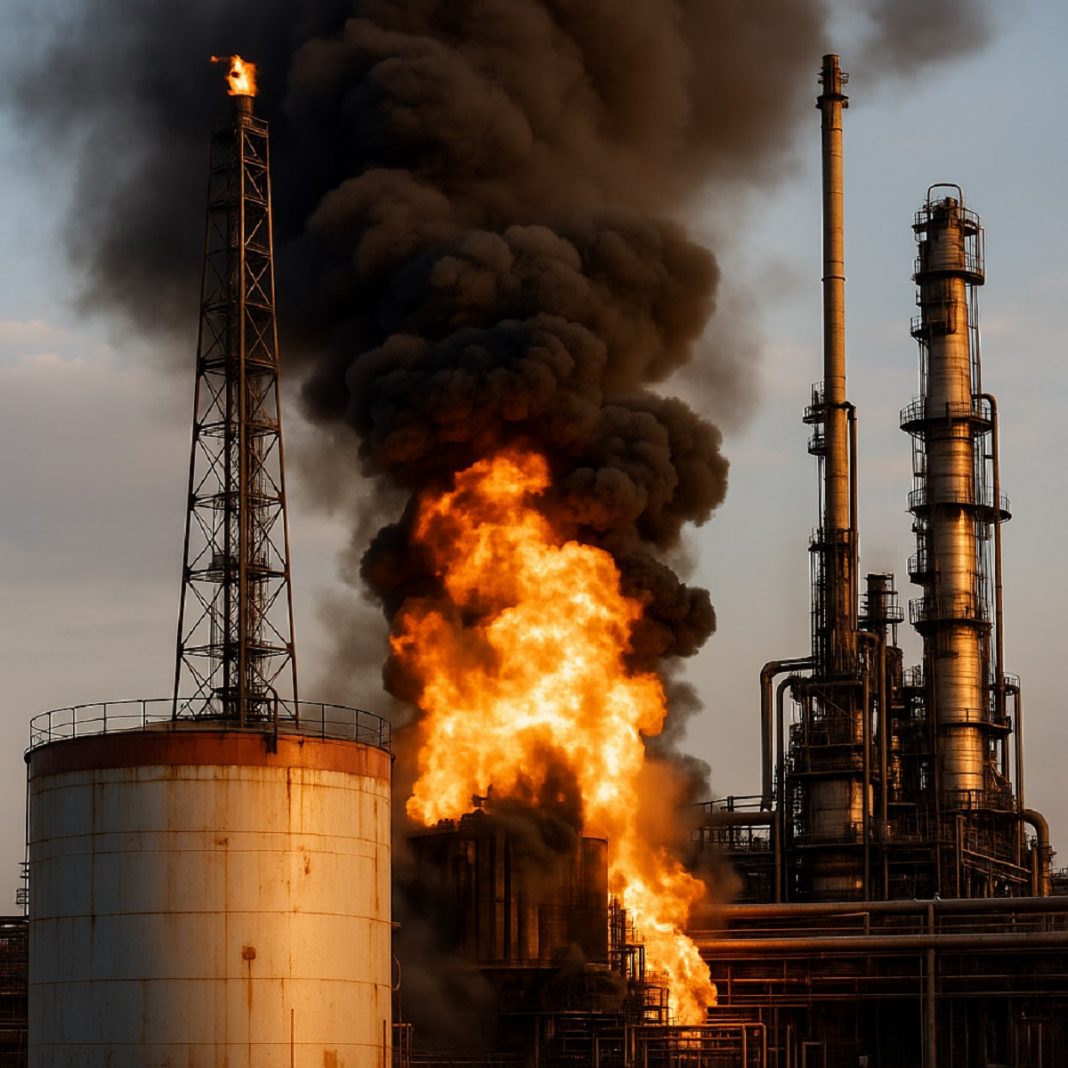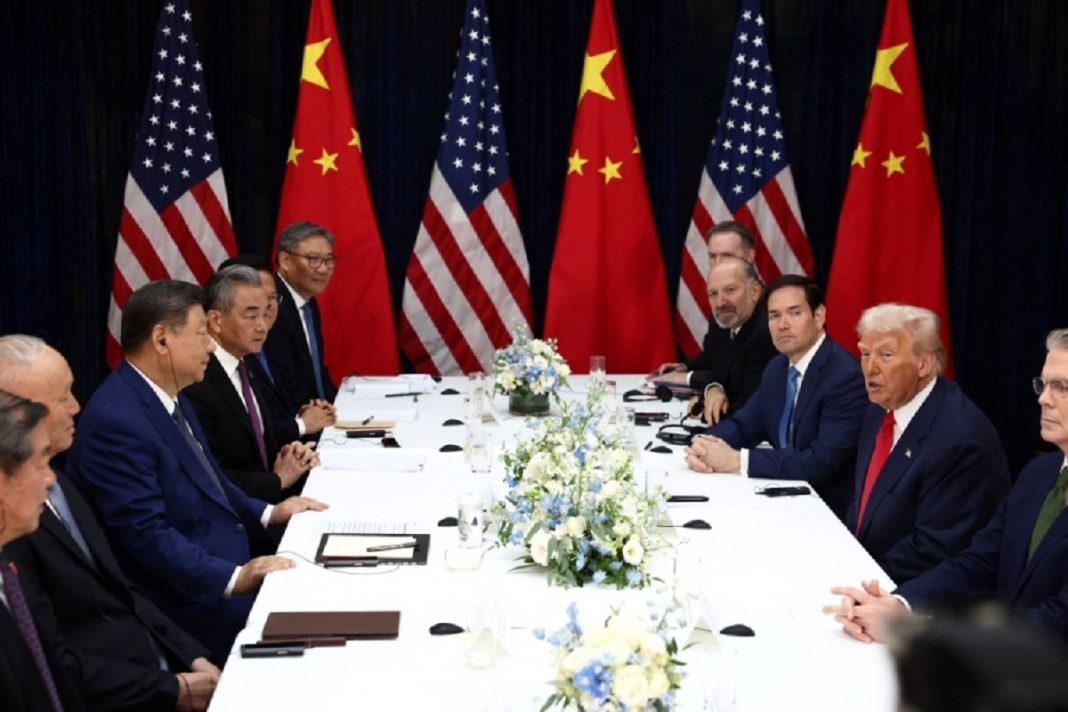Gabriel G Tabarani
For decades, Russia wrapped itself in the myth of inexhaustible power—an energy empire so vast, so self-sufficient, that nothing could shake it. Oil and gas were its currency of dominance, its shield against sanctions, and the source of its geopolitical swagger. Yet, three years into Vladimir Putin’s disastrous war in Ukraine, that image is cracking. The world’s third-largest oil-refining system is now plagued by fuel shortages, emergency repairs, and government panic. The problem isn’t a lack of oil—it’s the slow implosion of a system that can no longer protect itself.
Since August, Ukrainian drones have struck more than half of Russia’s 38 major refineries, some repeatedly, reaching targets more than a thousand miles from the front. Russia’s refining output has dropped by about ten percent, and long lines have appeared at gas stations in several regions. What once seemed unthinkable—fuel shortages in the world’s energy superpower—is now a daily anxiety for ordinary Russians.
These attacks won’t destroy Russia’s oil industry overnight. But that’s not the point. The real damage is cumulative. Each drone that slips past air defenses and ignites a refinery fire weakens the machinery of Putin’s war economy a little more. Ukraine’s strategy is a war of erosion—turning Russia’s greatest source of wealth into a liability that drains its attention, money, and confidence.
Moscow insists it’s under control. The Kremlin has imposed export bans, price caps, and emergency decrees to stabilize supplies. Oil firms have been bullied into keeping gas stations stocked even when it means selling at a loss. Officials boast that refineries can be repaired quickly, and technically they can. But every fix makes the system a little less stable. Spare parts are scarce, technicians overstretched, and maintenance rushed. Russia’s industrial resilience—the muscle that once kept its economy humming through sanctions—is being worn down by a thousand small fractures.
Meanwhile, the state’s heavy hand is suffocating what’s left of market efficiency. To maintain calm at home, the Kremlin is again commanding prices, dictating production, and threatening companies into compliance. Russia’s oil sector, once partially market-driven, is sliding back toward Soviet-style management—functional in the short term, but brittle and inefficient in the long run. When every decision about exports or maintenance depends on a government decree, innovation dies. What remains is a giant machine that still runs, but only because it cannot afford to stop.
Ukraine’s drone campaign is not only a technical success; it’s psychological warfare. Kyiv has turned the logic of Russian aggression back on its creator. For two winters, Russia has targeted Ukraine’s power grid, trying to freeze cities into submission. Now Ukraine is showing Moscow what it feels like when production halts, when workers stand idle, when key infrastructure becomes a fire hazard. These are not symbolic strikes. They are statements: you are not untouchable.
Each attack also exposes how vulnerable Russia’s geography and Soviet-era planning truly are. The refinery network is organized in regional clusters—one or two plants serving millions of people. When one goes down, entire oblasts feel the shock. Fuel must be shipped by rail from distant regions, creating bottlenecks and shortages. In this sense, Ukraine’s drones are doing what Western sanctions could not: forcing Russia to confront the limits of its vastness.
Kyiv’s calculus is shrewd. It knows it cannot destroy Russia’s oil empire outright, but it can force it to defend itself inefficiently. Every ruble Moscow spends repairing refineries is a ruble not spent on missiles or tanks. Every decree to cap fuel prices drains fiscal resources. Every export ban sends ripples through Russian finances. Ukraine doesn’t need to bring down the system—it just needs to make it more expensive to keep running.
Russia’s leaders now face impossible choices. Should they protect refineries or arms factories? Prioritize exports or domestic stability? Keep prices low for voters or let the market rebalance itself? Each answer carries political risks. High gasoline prices anger consumers; export limits anger oligarchs; supply shortages anger generals. The Kremlin’s instinct, as always, is to control everything—but control has its costs. Each new layer of intervention locks the economy deeper into stagnation.
For now, Russia muddles through. The pumps still flow, the refineries still burn, and the illusion of abundance persists. But underneath the surface, the structure is rotting. Deferred maintenance, spare-parts shortages, and hasty repairs are creating problems that will haunt the industry for years. Engineers call it “metal fatigue.” Economists might call it something else: decline disguised as stability.
Ukraine’s strategy carries risks of its own. Sustaining the tempo of drone attacks requires resources, intelligence, and Western support. Russia is adapting, too—throwing up netting and makeshift barriers over refinery complexes. These may look crude, but in warfare, even small obstacles can mean the difference between a near miss and a blaze. Still, the sheer number of targets across Russia makes perfect defense impossible. The attacker can always choose the next site; the defender can only react.
The deeper consequence of Ukraine’s campaign will not be the number of destroyed refineries but the transformation it forces within Russia itself. The war is turning the energy giant into a symbol of what the country has become: capable but constrained, powerful but aging, dependent on state control to mask decay. A petrostate that once exported confidence now exports crude oil it can’t refine. It’s a quiet humiliation—one drone strike at a time.
In the end, Ukraine doesn’t need to blow up Russia’s oil industry to win this round. It only needs to keep Russia fighting fires—literal and economic. Every refinery blaze, every price cap, every desperate government decree is a sign of mounting strain. The war began as a clash over territory, but it has become a test of endurance and adaptability. And in that contest, the energy superpower is starting to run on fumes.
This article was originally published in Arabic on the Asswak Al-Arab website


